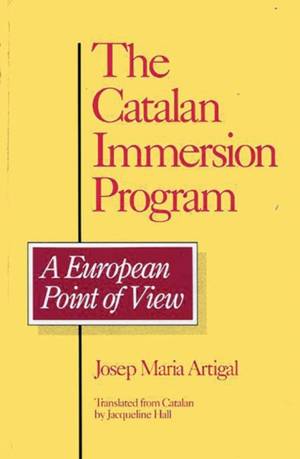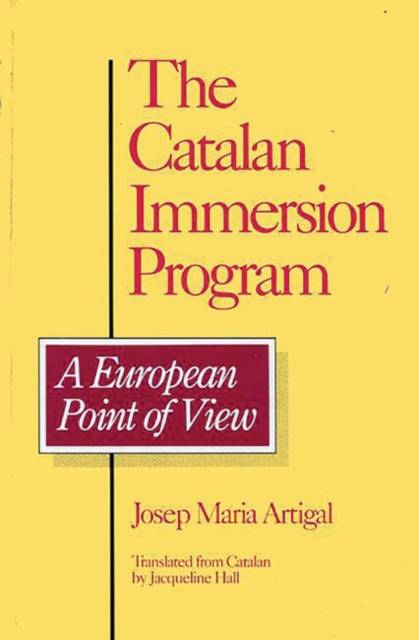
- Afhalen na 1 uur in een winkel met voorraad
- Gratis thuislevering in België vanaf € 30
- Ruim aanbod met 7 miljoen producten
- Afhalen na 1 uur in een winkel met voorraad
- Gratis thuislevering in België vanaf € 30
- Ruim aanbod met 7 miljoen producten
Zoeken
Omschrijving
This book describes an immersion program (school education conducted in a language different from that used at home) from a psycholinguistic, sociolinguistic and methodological view. The research is based on the more than 70,000 children in the Catalan immersion program, and the characteristic features of this program have relevance to researchers and practitioners in other countries. The book begins by describing the conditions to be fulfilled by any immersion program in order to be of benefit to the children taking part in it. As assessment is made as to how experiments carried out in Catalonia meet these basic prerequisites. The book then examines the specific characteristics of the immersion program in Catalonia. Two features are singled out for particular attention: the low sociocultural background of the pupils and the early age, 3-4 years, of the children when the program begins. By analyzing these two variables, the author is able to revise certain theoretical and methodological aspects of second language learning-the prime role often attributed to comprehension over production and the hypothesis that a threshold level of mastery of LI (home language) is needed to gain access to the second language. The book describes a process whereby L2 is acquired in such a way as to permit meaningful and effective comprehension and production in the new language from the very outset stressing that L2 is learned as it is used instead of being learned first and used later.
Specificaties
Betrokkenen
- Auteur(s):
- Uitgeverij:
Inhoud
- Aantal bladzijden:
- 128
- Taal:
- Engels
- Reeks:
Eigenschappen
- Productcode (EAN):
- 9780893917470
- Verschijningsdatum:
- 1/01/1991
- Uitvoering:
- Hardcover
- Formaat:
- Genaaid
- Afmetingen:
- 156 mm x 234 mm
- Gewicht:
- 358 g

Alleen bij Standaard Boekhandel
+ 254 punten op je klantenkaart van Standaard Boekhandel
Beoordelingen
We publiceren alleen reviews die voldoen aan de voorwaarden voor reviews. Bekijk onze voorwaarden voor reviews.











